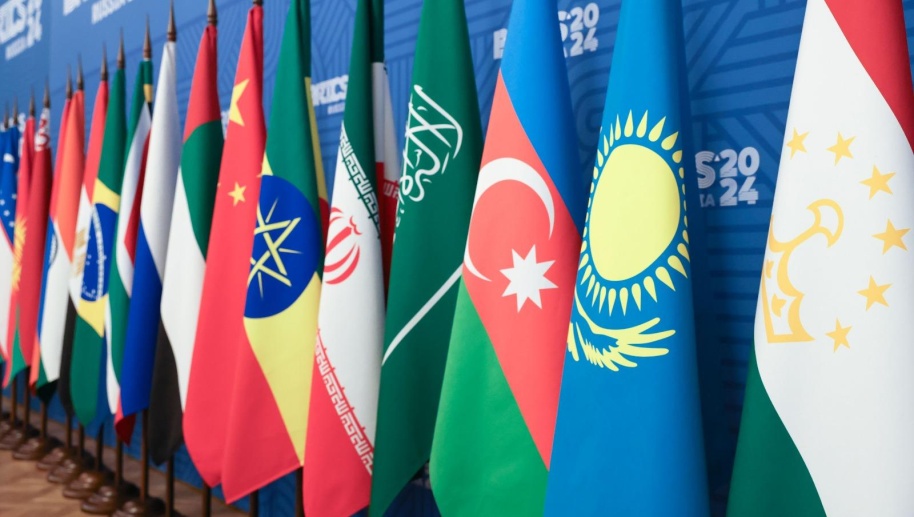The upcoming BRICS Summit in Kazan, Russia, is a significant event in the international arena, drawing attention from analysts, media, policymakers and the global public. This article provides a comprehensive and detailed examination of the key trends in the coverage of the summit by the Western media, focusing on the expansion of BRICS, geopolitical rivalries, economic strategies, internal divisions, and the global attention it is garnering.
Narratives 1: Expansion of BRICS
One of the most notable trends in the coverage of the BRICS Summit is the planned expansion of the group. In January 2024, six new countries—Argentina, Egypt, Iran, Ethiopia, Saudi Arabia, and the United Arab Emirates—are set to join BRICS. This expansion is seen as a strategic move to enhance the bloc’s influence on the global stage. The inclusion of these countries is expected to diversify the economic and political landscape of BRICS, making it a more formidable entity in international affairs.
The new members bring unique strengths to the table. For instance, Saudi Arabia and the UAE are major oil producers, which could enhance BRICS’ influence in global energy markets. Iran, despite facing international sanctions, has significant natural resources and a strategic location. Argentina and Egypt add to the group’s geographical diversity, representing South America and North Africa, respectively. Ethiopia, one of Africa’s growing economies, brings additional dynamism to the group.
The expansion is viewed as a response to the growing need for a multipolar world order, where emerging economies have a more significant role. Analysts from several respected think tanks and media from, especially from developing countries, suggest that the inclusion of these new members will bring in diverse perspectives and resources, potentially strengthening the bloc’s collective bargaining power.
However, narratives disseminated by the Western media and think tanks are mostly about the potential challenges of integrating these new members into the existing framework and impact on cohesive decision-making.
Narrative 2: Geopolitical rivalries
The BRICS Summit is being closely watched in the context of global geopolitical tensions, particularly the rivalry between China and the United States. The BRICS countries are often portrayed by the Western media as seeking to create an alternative to the Western-dominated international order. This narrative is driven by the bloc’s efforts to promote multipolarity and reduce dependence on Western institutions.
China and Russia, in particular, are seen as key proponents of this shift. They view the expansion of BRICS as an opportunity to strengthen alliances among emerging economies and counterbalance Western influence. This geopolitical dimension adds a layer of complexity to the summit, as member countries navigate their relationships with both Western powers and each other.
The geopolitical landscape is further complicated by the ongoing conflict between Russia and Ukraine. Russia’s involvement in the conflict has led to increased tensions with Western countries, and its participation in BRICS is seen by the Western media and think tanks to mitigate its international isolation. China, according to the narrative of the Western media, is leveraging BRICS to expand Belt and Road Initiative, seeking to enhance its economic and strategic influence across Asia, Africa and beyond.
Narrative 3: Economic strategies
Economic strategies are a major focus of the BRICS Summit, with particular attention on the concept of de-dollarization. There is a growing push within BRICS to use local currencies for trade among member countries, reducing reliance on the US dollar and therefore increasing resilience of BRICS economies. This move is seen by these countries as a way to enhance economic sovereignty and reduce vulnerability to external economic pressures. On other hand, in the eyes of the policymakers in the US, Western media and think tanks, this move is portrayed negatively with even hostile narrative.
While the idea of a common BRICS currency has been discussed, the Western media and think tanks mostly share opinion that it is unviable at this stage. According to them, the emphasis is on increasing the use of local currencies in bilateral and multilateral trade agreements. This strategy is seen by the Western think tanks and media as an initiative to facilitate smoother trade relations and reduce transaction costs. While this strategy evidently aligns with the broader goal of creating a more balanced and equitable global economic system, the narrative presented by most of major Western media outlets and thin tanks avoids mentioning this fact.
The New Development Bank (NDB), also known as the BRICS Bank, is seen by the Western media and think tanks as the institution playing a crucial role in these economic strategies. Established to fund infrastructure and sustainable development projects in BRICS and other emerging economies, the NDB is seen as a counterbalance to Western-dominated financial institutions like the World Bank and the International Monetary Fund (IMF). The bank’s efforts to finance projects in local currencies are seen as part of the broader de-dollarization strategy.
Narrative 4: Internal divisions
Despite the united front presented by BRICS, there are differences in opinions within the group. This differences in opinions were portrayed by the Western media and think tanks mostly as significant internal divisions. For example, the media from the Western countries have disseminated narrative that Brazil and India, for instance, have expressed caution about the expansion, fearing it might dilute their influence within the bloc. These countries, according to the analysts from major Western thin tanks, are concerned that the inclusion of new members could complicate decision-making processes and shift the balance of power within BRICS.
On the other hand, the Western media and think tanks have pushed narrative that China and Russia are more enthusiastic about growing the group and that they see the expansion to enhance their strategic interests and strengthen their positions in global affairs. These internal dynamics, as seen by media outlets and think tanks from Western countries, add a layer of complexity to the summit, as member countries navigate their differing priorities and concerns.
Global attention
The BRICS Summit in Kazan is attracting significant global attention due to its potential impact on international relations and economic policies. The BRICS countries represent a substantial portion of the world’s population and emerging markets, making their decisions influential on a global scale.
In the eyes of media, think tanks and the public from the majority of the world the BRICS Summit is seen as a platform for these countries to articulate their vision for a more equitable and inclusive global order, challenging the dominance of Western powers. On other hand, narratives pushed by major media and think tanks from the Western countries present the BRICS Summit as challenge to the concept of the international “rules-based order” that is being pushed by the Western bloc led by the United States.
Media coverage of the summit reflects this global interest, with analysts and commentators examining the potential outcomes and implications of the event. The summit is expected to address a range of issues, from economic cooperation and trade to global challenges and sustainable development. The decisions made at the summit could have far-reaching consequences for global governance and international relations.
The summit’s agenda includes discussions on enhancing intra-BRICS trade, promoting sustainable development, and addressing global challenges such as climate change and public health. These discussions are expected to result in concrete initiatives and developments that will shape the future trajectory of BRICS cooperation.
Therefore, it is natural that the summit is attracting global attention.
Summary
The upcoming BRICS Summit could be an important event with potentially far-reaching implications for global politics and economics as the summit represents a strategic moment for the BRICS countries to assert their influence and shape the future of international cooperation and governance.
As the summit unfolds, it is anticipated that the media the Western countries will be monitoring how these trends evolve and what they could mean for the future of international relations.
The trends in its media coverage by Western media show that the media prefer to focus on the complex dynamics at play, from the expansion of the group and geopolitical rivalries to economic strategies and internal divisions. In relation to narratives, it is clearly seen that the media and think tanks from Western countries would continue presenting negative narrative and trying to portray the BRICS Summit as a gathering of those who want to challenge the concept of the Western-led international “rules-based order”.
Explore more articles and resources in Insights or our Knowledge base.
Insights published by Media Scope Group are only a small taste of what we do. If you need comprehensive reports, forecasts and monitoring of global affairs, you can contact us and we will come back to you shortly.
Media Scope Group has more than 10,000 international experts, including researchers, analysts and former officials.
This work by Media Scope Group OÜ is licensed under Creative Commons Attribution-ShareAlike 4.0 International.

